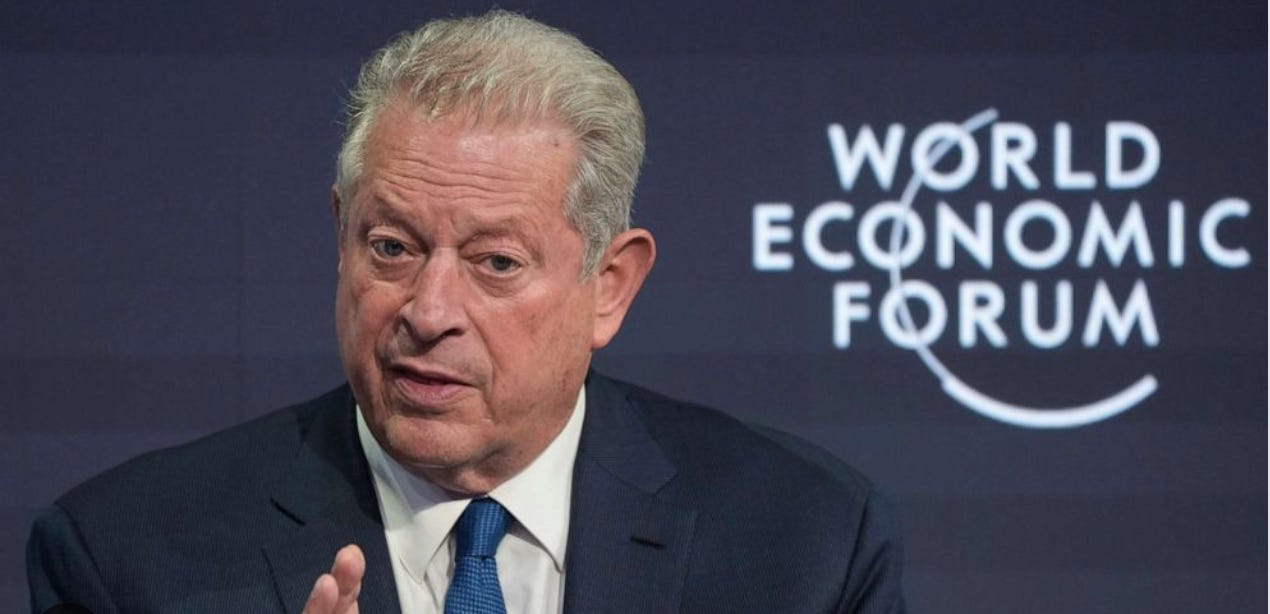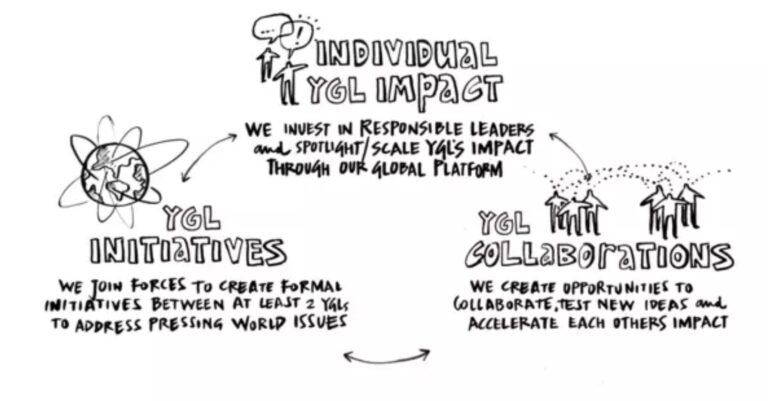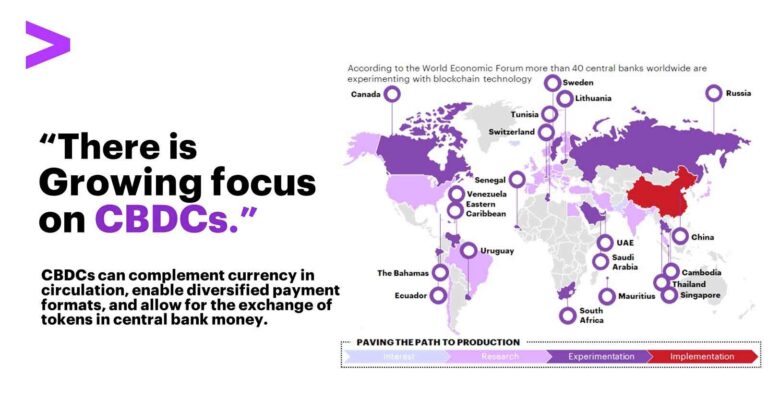Why I’ve changed my mind about the size of Carbon Dioxide’s role in climate change…
This article is a repost with permission from An Insult to Intuition
Climatology is complicated, and I do not claim to be an expert in this topic. It is generally accepted that CO2 levels are, in part, driving global warming. While I would agree that this is the case, my intuition tells me that the effect of CO2 levels in the range at which they exist in our atmosphere presently has very little to do with climate. I cannot discount a possible contributing effect of CO2, but I believe that the current perception that rising carbon dioxide levels are the central factor that is driving the destruction of our biosphere is unfounded and illogical.
First let me assure you that
- I believe the climate is changing. It would be absurd to think otherwise. Climate is in constant flux as ice core sampling has proven.
- I believe we should reduce our dependence on fossil fuels. Every effort to find alternative, clean or cleaner sources of energy must be made.
- I am against destroying our environment with strip mining, fracking, drilling and all other forms of resource extraction from the crust of our planet whenever it can be avoided.
- The destruction of natural habitats is a tragedy.
- Polluting our oceans and waterways must be minimized or eliminated.
- The ceaseless manufacturing and dumping of plastics into the environment is more than disheartening, especially given how heedlessly we abandoned our concern over this during the pandemic when we accepted that everything from fresh fruit to freshly baked muffins needed to be packaged or wrapped in plastic containers or saran wrap.
- I routinely stop and hug and talk to trees while walking our dog, Satya.
Do “experts” really know what they are talking about?
A few months ago I was having a casual conversation with a person who held a leadership position at M.I.T.’s Energy Initiative. He recounted the numerous, ongoing projects and experiments which were all designed to reduce industry’s so called “carbon footprint” by “engaging with industrial leaders to deploy clean energy advances at scale.” This person was passionate and happy to go into the details.
I asked him why he believed that reducing CO2 levels were central to preventing global warming. He looked at me like I had two heads. “Everybody knows that CO2 is warming the planet!”
At the time, I did too. I was only looking for a better explanation from someone who I believed was an expert.
“Carbon dioxide levels have been shown to be associated with warming trends for thousands of years,” he said. “If we can get CO2 down to about 2.5% from 3% we may be able to save ourselves.”
I was aware of the association. I wanted to know about causation. However, that isn’t why I was struck by his response. Did someone of his stature in the clean energy movement actually believe that carbon dioxide comprised 3% of our atmosphere? He did.
Although I am not a climatologist I do know something about carbon dioxide and how it affects the body. CO2 is highly diffusible across the alveolar membranes in our lungs. Higher CO2 levels in our blood dilate the arteries that feed our brains but constrict those that feed our lungs. CO2 levels also contribute to hemoglobin’s affinity for oxygen. These are some of the things anesthesiologists pay attention to, especially when caring for a critically ill patient.
The urge to breathe is also driven by sensitive chemoreceptors that sense minute changes in blood CO2 levels. To be more precise, most of the CO2 in our blood exists as carbonic acid, or H2CO3 when it combines with water. It then readily dissociates into a bicarbonate ion, HCO3– and H+. The concentration of H+ determines the pH of our blood. The pH must be strictly regulated in order for all of our cellular machinery to function. It is the pH that triggers chemoreceptors that in turn signal our brainstem to initiate the firing of the phrenic nerve which stimulates our diaphragm to contract. This draws fresh air into our lungs into which the CO2 in our blood diffuses and gets exhaled. The body thus reestablishes proper levels for another few seconds.
This happens 15 to 20 thousand times a day for every day of our lives, whether we are paying attention to it or not thankfully. Interestingly, the urge to breathe or the responsiveness of our bodies to pH levels is one of the fundamental signs of life. When it is absent, it means that the body is no longer alive, at least according to western standards of medicine. Our response to rising CO2 levels is indeed fundamental to our survival.
I was also very aware of how much CO2 is in the atmosphere. One might think because our bodies are constantly expelling carbon dioxide that they must be relatively free of the gas. This is far from the truth. CO2 makes up about 5% of the gasses in our blood plasma but our atmosphere is nearly completely devoid of CO2. Our bodies are more like bubbles containing CO2 at 100 times the concentration of that in the air around us.
I let him know that he was off by a factor of about 100. He didn’t believe me. When I googled it and showed him the results he was shockingly unfazed. I am not sure if he knew that there was two orders of magnitude difference between 3 percent and 300 parts per million. What else was he unaware of?
It got me wondering. Is that what the experts think? That dropping CO2 levels back to about 300 ppm (parts per million) would do the trick?
This is where intuition comes into play. Here’s the composition of our atmosphere today:
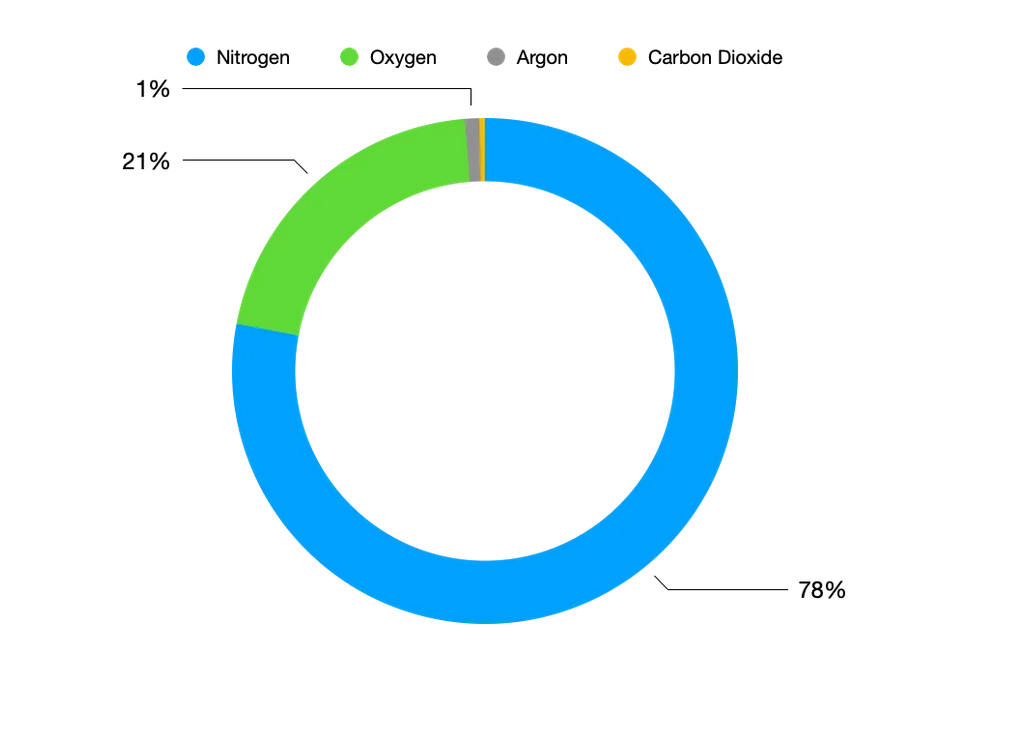
Carbon Dioxide appears as the yellow sliver on top, representing about 350 parts per million. Reducing it by 20%, his stated goal of the MIT Energy Initiative, would result in an atmosphere that has 280 parts per million and will look like this:
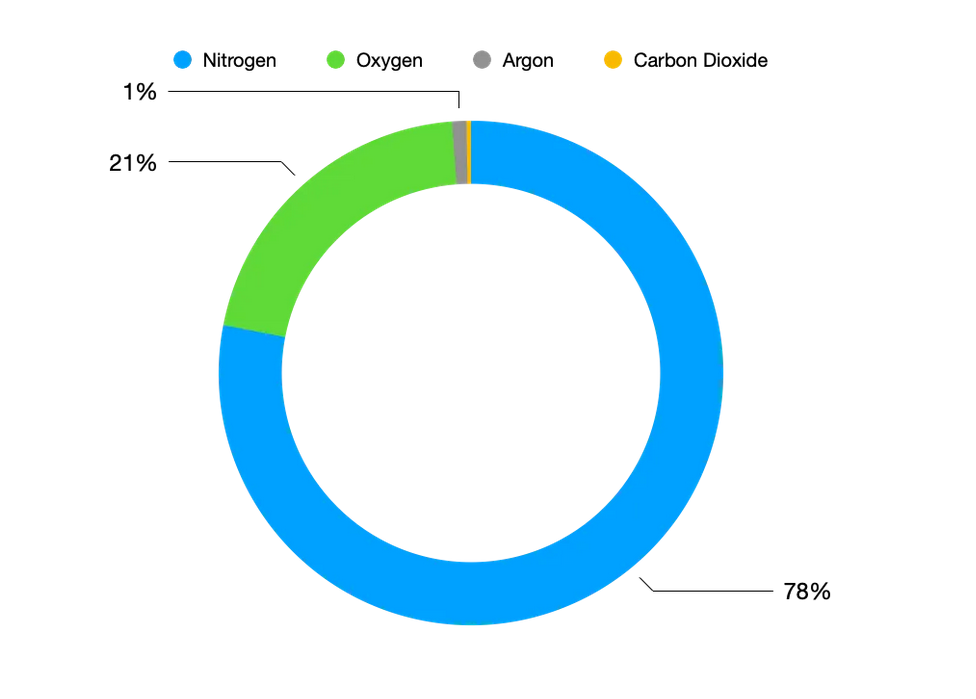
The difference is barely apparent to the naked eye. Would such a change prevent a global catastrophe as we are being told? Is this minute change really what is responsible for the rise in sea levels and melting of the ice caps? Who knows. I am not a climatologist. Personally, it doesn’t make much sense that it would. This is not just because the atmosphere would be about 99.995% the same if we dropped CO2 by 20%, but because CO2 levels are kept in equilibrium by all the organisms that use photosynthesis to survive. In other words, we have an enormous buffer in our environment that will respond to a modest increase in CO2.
Of course if we cut down too many trees and destroy plankton and kelp in our oceans the environment won’t be able to respond sufficiently, however that is another issue. All things left to themselves, higher CO2 levels will accelerate photosynthesis on the planet. That in turn will reduce CO2 in the atmosphere. It’s a beautiful feedback loop. In fact, the photosynthetic activity of all the plants on our planet is only one of two massive response mechanisms our planet has to rising CO2 levels (I will explain below).
This brings us to the next issue. Causation vs. Correlation. A common phrase these days. Why do we believe that higher CO2 levels cause global temperatures to rise? It is true that CO2 is one of several “greenhouse gasses” that trap heat absorbed from the sun. But why would we believe that changing the gaseous composition of the atmosphere by 0.005% would make such a big difference?
Is that really what all the experts are saying? The claim that nearly all climatologists are in agreement about this has dubious origins, however neither here nor anywhere else in my musings am I interested in the prevailing narrative. I am only trying to make sense of what the public is being told.
For the umpteenth time, I am not a climatologist but in my investigation I don’t believe we have anything good to go on besides ice core data taken from antarctica.
There’s no reason for me to doubt the meticulous data published around the world with regard to this body of information gathered by truly intrepid scientists that show that CO2 levels and global temperatures are correlated. But again, we aren’t looking to prove correlation, we want to know if CO2 levels caused temperatures to rise historically.
I took my nose out of vaccine data for a couple of days to look into this. I was amazed to find nothing that proves that in the samples taken from ice cores. I wondered why I believed it to be true for so long.
Why was I misled for so long?
The answer was obvious. It was because of a very popular movie, “An Inconvenient Truth”. I watched it when it first came out, and I still remember the feelings of dread and urgency I felt at the time. Not only was our country engaged in unjust wars in Iraq and Afghanistan, we had something much bigger to worry about according to former Vice President Al Gore, the man I believed won (or should have won) the 2000 presidential election.
If Gore was in office our country wouldn’t have been at war, I thought. I was deeply disappointed that he backed down and desisted from challenging the election results so readily. Five years later he re-emerged into the public sphere to deliver the dire warning, explaining the incontrovertible data in his gentle southern drawl, talking to all Americans, not just his party. Why oh why couldn’t he be in charge and not GW?
I don’t mean to be political. Personally, I have become steadfastly apolitical in the last few years. I am only pointing out how much politics were in play at the time “An Inconvenient Truth” hit the theaters.
I recently revisited the movie to remind myself how Al Gore closed the case on the topic for me. What I found instead was a masterclass in misdirection.
A Masterclass in Misdirection
Here is a six minute long excerpt from the movie where he drops the (apparent) evidence for CO2 driven global warming:
Did Gore actually say that higher CO2 levels are causing global warming? Not exactly. The closest he comes to implying it occurs at 03:41: “When there is more carbon dioxide, the temperature gets warmer.”
Technically he is not asserting causation, however compare it to the statement, “When the temperature gets warmer, there is more carbon dioxide.”
Do they mean the same to you? If they don’t, consider how it might affect how you interpret the key data that he presents in the graphs below…

This was his first “truth bomb”. The left graph is temperature on half the planet over the last 1000 years. The right are the CO2 levels over the same period. Both seem to be going through the roof. The key question is, what is happening first, a rise in temperature or a rise in carbon dioxide?
It’s hard to tell. Not only because you cannot read the time axis on the right but also because it is impossible to define when the startling rise in both variables began. The vertical axis in the left graph is temperature. These are relative temperatures but relative to what exactly? Is “0” degrees supposed to be what the temperature of the earth should be? Or is this just where it happened to be for the first four hundred years of the last millennium? If so, there was a distinct drop in temperature at around the year 1500, 100 years before a distinct drop in CO2 occurred at around the year 1600.
To be clear, I am not asserting that we can conclude anything from these plots, only that nobody can or should. Let’s move on …
Next, at minute 02:34 he shows us this remarkable plot taken from data from Antarctic ice cores. Gore lets the audience know that this is the first time the public has ever been shown this graph (pay attention!).

He walks across the mammoth stage while pointing out when the last 7 ice ages occurred. These happened at the low points in the plot. But here he isn’t showing us a plot of temperature, he’s showing us carbon dioxide levels. He isn’t lying. These were the times the Earth was experiencing cold snaps. They happened when CO2 was at its lowest. He is showing us an association, but how would some people interpret this? Will they assume that the low CO2 levels are driving the temperature downwards which leads to ice ages?
Also notice that the plot is in red. It’s odd that the last time he showed us a graph the color red was used to plot temperature, not CO2. Why the switch in color? Was it a mistake or was this a deliberate but subtle way of confusing the audience so that they would have to look to him to tell us how we should be interpreting the data?
Next, he plots the planetary Temperature, now in blue for whatever reason:

There are three important points to take from these graphs.
- The time scale makes it even more difficult to see which rises first, CO2 or Temp. Even if one variable lagged the other by a thousand years it wouldn’t be apparent.
- The first pair of graphs, which only covered only the last 1,000 years, is represented by the tiniest sliver of these graphs on the far right. The “hockey stick”, or abrupt rise in both variables in the side by side plots shown earlier is no more than noise on a trend that takes a hundred times longer to appreciate. 0 degrees on the original temperature plot actually sits much higher than the average temperature of the planet over this much longer period.
- Most importantly, if we were to assume that CO2 is driving the warming and cooling of the planet, what, then, is causing the swings in CO2? Were there coal factories and internal combustion engines hundreds of thousands of years ago? Did our cave dwelling ancestors, sick of the cold weather, inadvertently drive the planet out of its interminable winter weather by pumping CO2 into the atmosphere by keeping their campfires lit 24/7?
Before we take a closer look at established scientific theory, let’s look at the best glimpse of this data set the audience gets in the movie. It only lasted a few seconds in the film:

Admittedly, it is very difficult to tell which variable begins to rise first. It would be very difficult to assert that the rises in CO2 levels (red) precede the temperature swells. Nevertheless, that is what the audience is led to believe. Remember what he told us? “When there is more CO2, the temperature gets warmer.” Is this what the data is really showing us?
What does prevailing scientific theory have to say?
The driving force behind large climate changes is not carbon dioxide levels. It is the amount of solar radiation (insolation) the earth is exposed to. Insolation is a function of three cyclic variables: eccentricity of the earth’s orbit, obliquity, or the angle of Earth’s axis with respect to Earth’s orbital plane and orbital precession which changes the direction of the Earth’s axis of rotation with respect to the plane of the Earth’s orbit around the sun.
Taken together, these three cyclical variables, also known as orbital control, explain why the Earth experiences ice ages every 100 thousand years or so. This is indeed the period of the large global temperature cycles apparent in the graphs that Gore showed us above. He did not mention this phenomenon but instead simply said that the ice ages were occurring when atmospheric CO2 levels were lowest.

In this plot published here with data taken from the National Oceanographic and Atmospheric Association, we see that temperature and CO2 levels rise in near unison at the end of ice ages, however global temperature drops several thousand years prior to declines in CO2 levels (Note that time is given in reverse with present day at the left).
Here’s a closer look at the beginning of the last ice age:

Despite high levels of CO2 130 thousand years ago, the planet plunged into an ice-age eight thousand years before carbon dioxide levels fell. This delay is apparent in each of the last four ice-age cycles as well.
Indeed, in a seminal article by Petit et al published in 1999 where ice core sampling from Vostok, Antarctica was first analyzed, the authors state:
“The CO2 decrease lags the temperature decrease by several kyr [thousand years]…”
Although Petit et al warn that high CO2 levels may amplify warming trends, they admit that planetary temperature moves largely independently of CO2 levels due to changes in insolation. But why would CO2 levels follow? It is because the biggest contributor to CO2 levels in the atmosphere is not human activity but the release of the gas from our planet’s oceans, the biggest reservoir of CO2. Lower temperatures make CO2 more soluble in water and the gas is absorbed from the atmosphere and dissolves in our oceans. Similarly, higher temperatures make CO2 less soluble and the gas is released into the atmosphere. When the temperature gets warmer, there is more CO2.
It is this fact that is also behind the apocalyptic, CO2 driven global warming narrative. Warmer oceans means more CO2 released. More CO2 in the atmosphere raises the temperature of the oceans. It’s what is known as a positive feedback loop that cannot be stopped. We are going to fry!
This myopic view of the evidence is dangerous indeed. Bring your attention to the plot above that shows global temperatures and CO2 levels superimposed. Why didn’t Gore superimpose the two variables? This is how the data should have been presented if he was truly interested in getting to the bottom of things.
We are presently at the left side of the graphs. We are in between ice ages. We have been in this relatively balmy period for most of our recorded history. The Earth is essentially where it was 130 thousand years ago with regard to temperature and CO2. The 1 to 2 degree warming predicted from higher than normal CO2 levels from anthropogenic sources is modest when compared to the 8 to 9 degree plunge in planetary temperature that will inevitably come from a predictable fall in insolation. The fall in ocean temperatures will increase CO2 solubility and atmospheric CO2 levels will follow, just like they have for the last 650 thousand years.
In a sense we can see that our oceans are “breathing” too, except at a much slower rate. Every hundred thousand years or so they “exhale” the carbon dioxide they have absorbed from the atmosphere during cold periods. The difference is that the signal to “breathe” doesn’t come from CO2 levels as they do in our blood plasma but from the cyclical rhythm of orbital control.
It is true that CO2 levels are the highest they have ever been per our best historical data. Even so, this high level represents only a miniscule change in atmospheric composition, no matter where we are in the climate cycle.
Is this enough to override the variation in insolation that has driven climate for the last 600 thousand years or more? Are we really on a runaway train of inevitable global warming? Or are we being misled to serve a different agenda that involves the acceptance of carbon taxation, enormously expensive behavior and industry modifications that necessitate more centralized authority so that we can “cooperate” in order to save the planet?
What is your intuition telling you?

